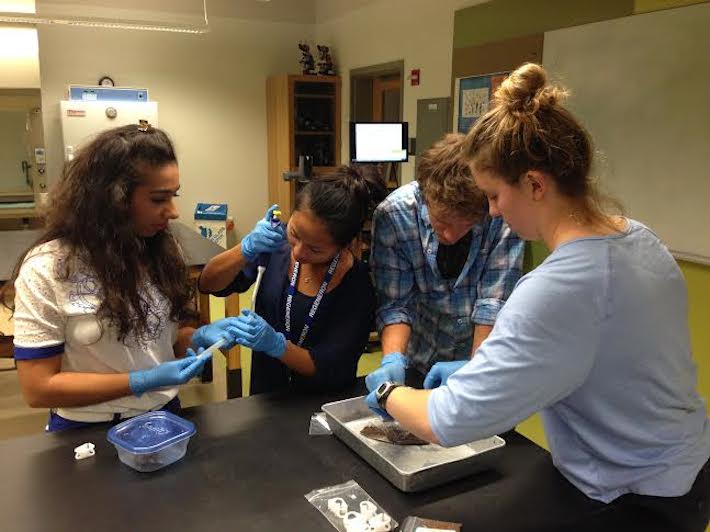When an unmanned NASA rocket exploded seconds after launching off the Virginia coast last Tuesday, Shayda Shahbazi’s science experiment also went up in flames. But the George Washington University senior is confident that her team’s project will eventually make its way to space.
“Of course it was upsetting, but things don’t always go the way you anticipate. It’s part of a researcher’s job description,” said Ms. Shahbazi, a student in the School of Engineering and Applied Science. Ms. Shahbazi, SEAS student Xixi Ni and two Georgetown University students are aiming to assess the effects of microgravity, or “weightlessness,” on seed germination.
There were 18 student research projects on board the Antares rocket when the Orbital Sciences Corporation mission to the International Space Station ended in a ball of fire. An operator deliberately destroyed the rocket after it became apparent there was a problem, a spokesman for Orbital Sciences Corporation said Thursday. The company is still investigating what went wrong.
Ms. Shahbazi, who was in a class at GW when she heard the news, said she is most relieved that no one was injured in the catastrophe.
“We are so fortunate that nothing happened to any of the people that were on site. That’s really what matters the most,” she said.
Ms. Shahbazi, Ms. Ni and their Georgetown team members are part of the Student Spaceflight Experiments Program (SSEP). The experiment design competition—in partnership with NanoRacks and the National Center for Earth and Space Science Education—challenges students to design an experiment and vie for the chance to send it to the International Space Station.
SSEP judges chose the GW/Georgetown team’s winning research proposal along with 17 others from more than 1,400 entries.
The students are exploring whether chrysanthemum plants can remove harmful toxins from the air in space. Astronauts who spend extended periods of time in enclosed space vehicles are especially susceptible to indoor air pollution, which can cause diseases like sick-building syndrome and cancer. Previous research has found that chrysanthemums can act as purifiers, but in order to ensure that the plants can last on long-term space missions, chrysanthemums must be able to reproduce in microgravity conditions.
For their SSEP project, the students put seeds, distilled water and potting mix in a plastic test tube known as a “mini laboratory,” which is specifically designed to combine separate sample materials once in orbit. Once the mini-lab is sent into space, an astronaut would execute the experiment by removing the test tube’s clamp and initiating the germination process. After returning to Earth, the seeds would be planted alongside a control group, and the students would compare the growth rates of the two groups.
“If the experiment is successful, then that means that these plants can be used to purify the air on a spacecraft for multiple generations,” Ms. Shahbazi said.
Last Sunday, Ms. Shahbazi and her team traveled to Wallops Island to watch the rocket launch, which was originally scheduled for Monday. But officials halted the takeoff for safety reasons when they spotted a fisherman close to the area, Ms. Shahbazi said. The GW senior needed to fly back to Washington, D.C., before Tuesday’s liftoff attempt, because she had a presentation to give in an engineering design course.
While in class on Tuesday, Ms. Shahbazi received a short text from an SSEP director telling her “everyone was safe.” She then immediately did a Google search on her phone and saw the shocking news.
Luckily, hope is not lost. SSEP directors told the students that they will have to re-make their mini-lab experiments, but they will be loaded on to another spacecraft—maybe even as soon as Dec. 9 if there is room on the SpaceX launch.
Ms. Shahbazi, who dreamed of becoming an astronaut when she was a little girl, can’t wait to shoot for the stars one more time.
“If I can’t go to space, then I definitely would love the opportunity to send a project there,” Ms. Shahbazi said. “And you never know—with commercial space travel starting up, I may find my way there too.”


